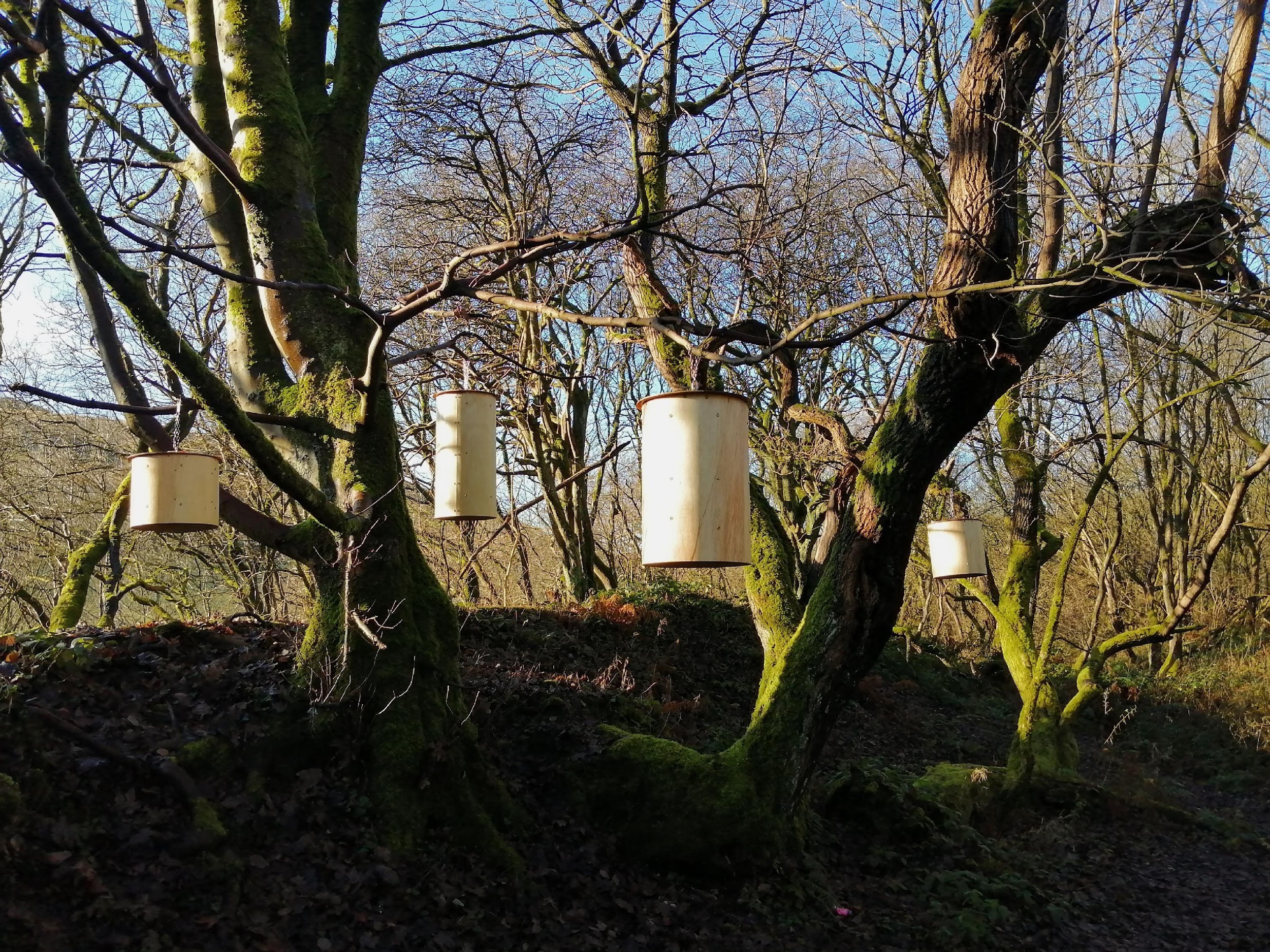
Chris Ruffoni talks us through ‘Solarphones’, his latest sound installation formed from self designed solar-powered acoustic instruments.
Chris Ruffoni’s latest work, ‘Solarphones’, is a sound installation formed from unique solar powered acoustic instruments he himself designed. Here Chris talks us through the process that led to the creation of these fascinating inventions.
The Development Process
I had been developing ‘Solarphones’, mostly during the sunnier months, since 2017 and was very grateful to receive support from Sound and Music to pursue it further, via the Francis Chagrin Award in 2018. The project started when I bought one of these solar crabs in Whitby:
[[{"fid":"49631","view_mode":"default","type":"media","field_deltas":{"14":{}},"link_text":null,"fields":{},"attributes":{"height":465,"width":620,"style":"width: 400px; height: 300px;","class":"media-element file-default","data-delta":"14"}}]]
Whilst staring at the crab as I washed the dishes, I thought, ‘wouldn’t it be nice if they could make a sound, maybe I could attach something to them so they can play when the sun shines’. This didn’t work, but the idea stuck. Since moving to a rural area, being in nature has become an integral aspect of my wellbeing and this gets reflected in my artistic practice. I believe that an appreciation of our sonic surroundings can give us moments of connection and calm, and inspire environmental awareness.
I found small solar panels and motors on the Kitronik website and discovered that I could make sounds with a simple set-up. It became clear I wouldn’t be able to make these instruments by myself so I turned to joiner and all-round creative mastermind John Robertson-Dwyer of Vortex Studios, Huddersfield. I made a rudimentary proof of concept from our drawings and discussions before we moved on to make the proper versions.
[[{"fid":"49632","view_mode":"default","type":"media","field_deltas":{"15":{}},"link_text":null,"fields":{},"attributes":{"height":465,"width":620,"style":"height: 300px; width: 400px;","class":"media-element file-default","data-delta":"15"}}]]
There were a few design elements that were crucial to the concept and were challenging to address:
- They must work outside - since they need enough light to work, they need to be outside. Therefore, they must be weatherproof. The mechanics had to be kept away from the elements.
- They should be able to be installed for long periods of time - they must work by themselves, without someone looking after them. This became the most challenging aspect.
- The sounds produced should have a chaotic element - they shouldn’t produce the same notes in the same order all the time. There should be an organic nature to the sound to help them ‘sit’ in the environment.
- They should only work when there is light - it would have been simple to create a circuit which charged a battery so they could sound more often, but this did not seem as poetic.
- They should look good - we listen with our eyes as well as our ears.
The Instruments Now
Following this development process, and attempting to solve the design challenges we’d set ourselves, we reached the current iteration of ‘Solaphones’ experienced today.
At the heart of ‘Solarphones’ are small solar panels, which power a mechanical system contained within bespoke wooden enclosures, each containing 7 tuneable guitar strings.
The solar-powered mechanical system that allows the instrument to play is a motor suspended upside down, with a metal wire attached - which hits the strings. The suspension allows it to move chaotically and pluck strings in different orders. The instruments are also usually suspended themselves (in trees or on stands) so the movement of the motor is also affected by the wind.
The guitar strings are attached to a shaped bar of hard wood with a harp tuning peg at one end and a screw at the other. Then each bar is fixed to the flex-ply enclosure. This means they are fully tuneable, with the four instruments spanning in total nearly four octaves.
The system produces sequences of notes in a chaotic fashion, dictated by the amount of sunlight hitting the solar panels. The more light the panels receive, the faster and louder the notes become. Designed to connect directly with the environment in the present moment - there is no capacity to store energy and no batteries are used - they only sound when there is sufficient light. They are weatherproofed and can be installed for long periods of time or short events.
[[{"fid":"49633","view_mode":"default","type":"media","field_deltas":{"16":{}},"link_text":null,"fields":{},"attributes":{"height":465,"width":620,"style":"height: 300px; width: 400px;","class":"media-element file-default","data-delta":"16"}}]]
First Showings
By Summer 2019 the instruments were ready to show publicly. They had three outings; Poetry etc Festival, Laurence Batley Theatre’s 25th Birthday, and Growing Works’ Harvest Celebration.
After such a long time in development it was a relief to see people react to them so positively, children and adults alike. In particular, it was clear children enjoyed playing with them by covering the solar panels with their hands. Knowing there would be many children at the Growing Works events I made a little demonstration version so they could see and play with a simplified version, which has helped me to develop accompanying workshop ideas. I am taking bookings for showings in 2020.
If you are interested in the Solarphones, email: chrisruffoni@gmail.com
Find out more at: www.chrisruffoni.com
[[{"fid":"49636","view_mode":"default","type":"media","field_deltas":{"17":{}},"link_text":null,"fields":{},"attributes":{"height":465,"width":620,"style":"height: 300px; width: 400px;","class":"media-element file-default","data-delta":"17"}}]]
If you're a composer, sound artist or musician like Chris, we'd love you to add your own work to the collection. Start building a profile here.